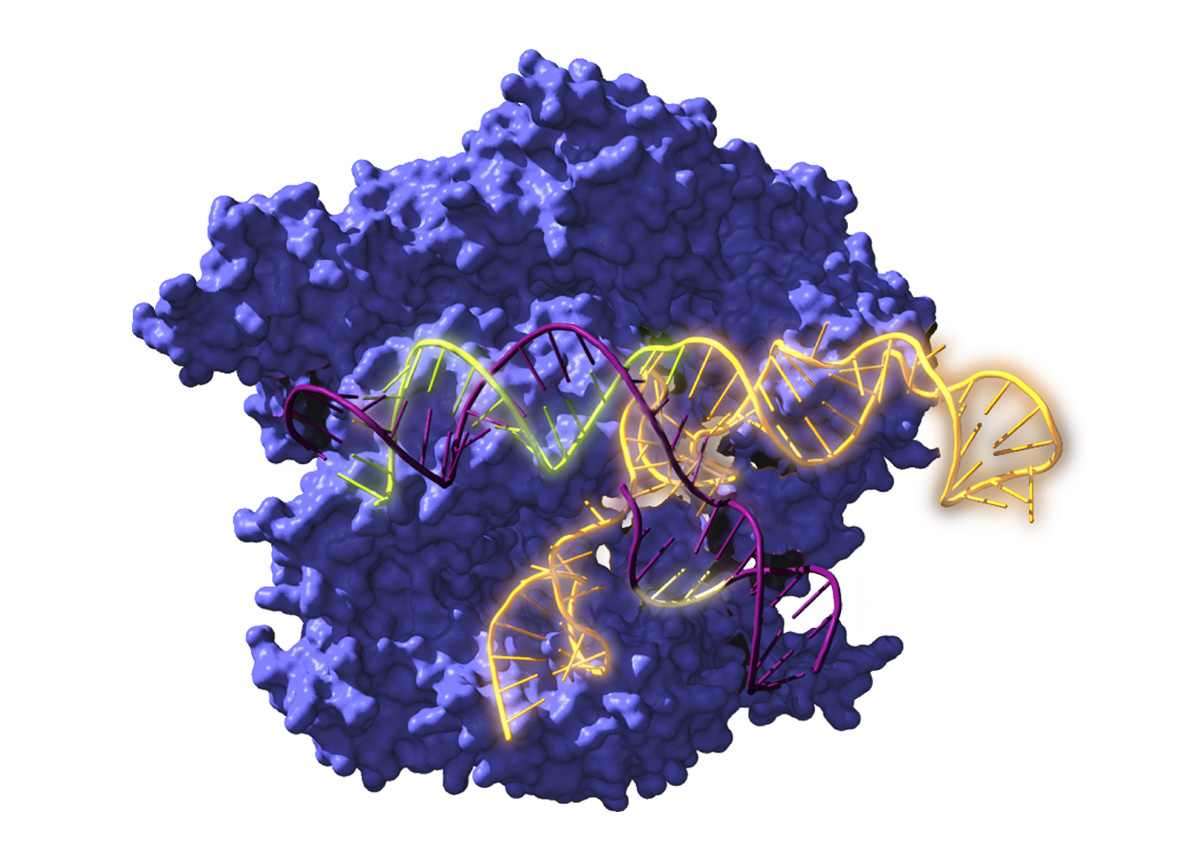
Researchers Resurrect CRISPR's 2.6 Billion-Year-Old Ancestors
January 11, 2023| |
For the first time, an international research group has reconstructed the ancestors of the well-known CRISPR-Cas system dating back 2.6 billion years and studied their evolution over time. Led by Ikerbasque research professor Rául Pérez-Jiménez of CIC nanoGUNE, the researchers find that the revitalized systems not only work but are more versatile than current versions.
The research team considers their findings "open new avenues for gene editing." The Nanobiotechnology group at nanoGUNE has spent years studying the evolution of proteins from the origin of life to the present day. They do ancestral reconstructions of proteins and genes from extinct organisms to see their qualities and whether they can be used in biotechnological applications. Their work, published in the journal Nature Microbiology, reconstructs the evolutionary history of CRISPR-Cas systems for the first time, from ancestors dating back 2.6 billion years to the present day.
The research team performed the computational reconstruction of the ancestral CRISPR sequences, synthesized them, and studied and confirmed their functionality. Lluís Montoliu, a researcher at the National Biotechnology Center of the CSIC (CNB-CSIC) and CIBERER, said they found that they can revitalize Cas proteins that must have existed billions of years ago and find that they already had the capacity then to operate as gene editing tools. Another interesting finding in the study is that the CRISPR-Cas system has gradually become more complex over time, an indication of the adaptive nature of the system.
For more details, read the article on the CIC nanoGUNE website.
| |
You might also like:
- Pocket K No. 54: Plant Breeding Innovation: CRISPR-Cas9
- The Current Status of CRISPR-Cas9 Applications in Food and Agri
- New Plant Breeding Techniques: CRISPR/Cas9 System
Biotech Updates is a weekly newsletter of ISAAA, a not-for-profit organization. It is distributed for free to over 22,000 subscribers worldwide to inform them about the key developments in biosciences, especially in biotechnology. Your support will help us in our mission to feed the world with knowledge. You can help by donating as little as $10.
-
See more articles:
-
Gene Editing Supplement (January 11, 2023)
-
Research and Tools
- Epigenome Editing Enhances Resistance Against CBB
- Seed Shattering 11 Controls Seed Shattering in African Rice
- Grafting and Mobile CRISPR Overcomes Limitations of Genome Editing in Plants
- Researchers Resurrect CRISPR's 2.6 Billion-Year-Old Ancestors
- Multiplex Base-Editing System Reveals Unidentified Fungal Strains with Medical Potentials
-
Public Acceptance and Engagement
- Survey Shows US Consumers Value Taste Over Breeding Method of Table Grapes
-
Read the latest: - Biotech Updates (December 10, 2025)
- Gene Editing Supplement (November 26, 2025)
- Gene Drive Supplement (February 22, 2023)
-
Subscribe to BU: - Share
- Tweet

